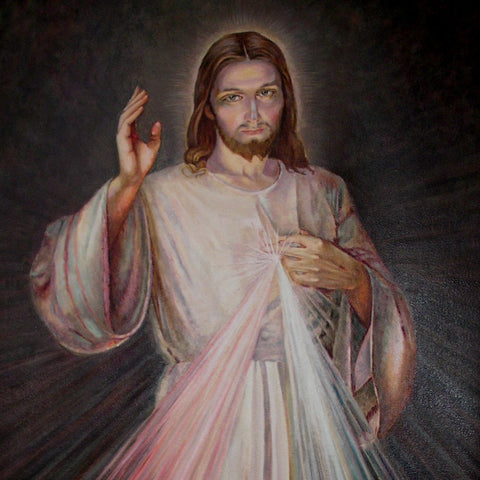Divine Mercy Devotion

The Divine Mercy is a Roman Catholic devotion to the merciful love of God and the desire to let that love and mercy flow through one's own heart towards those in need of it. The devotion is due to St. Faustina Kowalska (1905-1938), who is known as the Apostle of Mercy.
Faustina Kowalska reported a number of visions of Jesus and conversations with him which she wrote in her diary, later published as the book Diary: Divine Mercy in My Soul. The three main themes of the devotion are to ask for and obtain the mercy of God, to trust in Christ's abundant mercy, and finally to show mercy to others and act as a conduit for God's mercy towards them.
The devotion places emphasis on the veneration of the Divine Mercy image which Faustina reported as a vision of Jesus while she was in her cell in the convent. The image is displayed and venerated by Catholics on its own, and is solemnly blessed during Divine Mercy Sunday. The devotion includes specific prayers such as the Chaplet of Divine Mercy.
The Devotion
| " |
Proclaim that mercy is the greatest attribute of God. — Words attributed to Jesus by Faustina in her diary. (Diary, 300) |
” |
The primary focus of the Divine Mercy devotion is the merciful love of God and the desire to let that love and mercy flow through one's own heart towards those in need of it. As he dedicated the Shrine of Divine Mercy, Pope John Paul II referred to this when he said: "Apart from the mercy of God there is no other source of hope for mankind".
As in the prayers that form the Chaplet of Divine Mercy, there are three main themes to the Divine Mercy devotion: to ask for and obtain the mercy of God, to trust in Christ's abundant mercy, and finally to show mercy to others and act as a conduit for God's mercy towards them.
The first and second elements relate to the signature "Jesus I trust in You" on the Divine Mercy image and Faustina stated that on April 28, 1935, the day the first Divine Mercy Sunday was celebrated, Jesus told her: "Every soul believing and trusting in My Mercy will obtain it".
The third component is reflected in the statement "Call upon My mercy on behalf of sinners" attributed to Jesus in Faustina's diary (Notebook I, items 186-187). This statement is followed in the diary by a specific short prayer: "O Blood and Water, which gushed forth from the Heart of Jesus as a fount of Mercy for us, I trust in You." which Faustina also recommended for the Hour of Divine Mercy. In her diary (Notebook II, item 742) Faustina wrote that Jesus told her: "I demand from you deeds of mercy, which are to arise out of love for Me." and that he explained that there are three ways of exercising mercy toward your neighbor: the first-by deed, the second-by word, the third-by prayer.
The Divine Mercy devotion views mercy as the key element in the plan of God for salvation and emphasizes the belief that it was through mercy that God gave his only son for the redemption of mankind.

